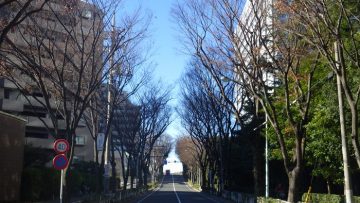What are Ota City’s Selected Famous Trees?
Ota City designates 31 trees, including huge or symbolic trees, as of December 2018.
Why don’t you walk around for a break to see these trees during your eating tour?
Kamata area
Nishi-Kamata Park (Park category–Camphor tree)
Address
8 Chome-6-12, Nishi-Kamata
Access
An 8-minute walk from Kamata Station of JR Keihin-Tohoku Line
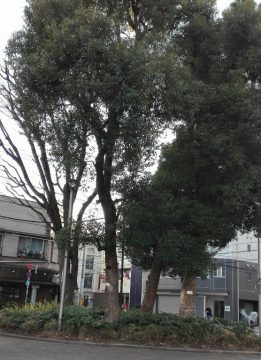
Omori/Sanno area
Soho Park (Park category–Catalpa)
Catalpa–a tree that symbolizes affection between Jo Niijima (teacher) and Soho Tokutomi (student).
Jo Niijima, the founder of Doshisha University, brought back the tree seeds from the U.S. in late 1870s or early 1880s and gave some to Soho Tokutomi, which is reportedly the beginning of the tree’s history.
It has been said that Niijima gave the seeds to encourage Tokutomi, who was struggling for youth education, thus giving the tree a historic meaning that shows their affectionate relationship.
The current tree is the third generation cut from the second generation located in the premise of Kumamoto City Tokutomi Memorial Museum in June 1988. The tree was given by the museum in March 1990.
Address
1 Chome-41-21, Sanno
Access
A 5-minute walk from the Magome Ginza bus stop of Tokyu Bus for Shindaita Station from Omori Station of JR Keihin-Tohoku Line, or a 15-minute walk from Omori Station of JR Keihin-Tohoku Line
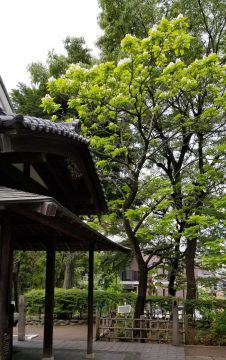
Magome-sakura-namiki Street (Roadside tree category–Cherry tree)
Address
4 Chome and 6 Chome, Minami-Magome
Access
A 5-minute walk from the Usuda Sakashita bus stop of Tokyu Bus for Ebara-machi Station Entrance from Omori Station of the JR Keihin-Tohoku Line, or a 5-minute walk from Nishi-magome Station of Toei Asakusa Line
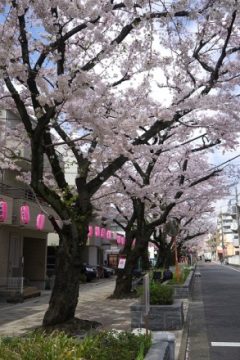
Saikiyama Green Space (Park category–Ginkgo)
Address
5 Chome-30-15, Chuo
Access
A 15-minute walk from Nishi-magome Station of Toei Asakusa Line, or a 6-minute walk from the Usuda Sakashita bus stop of Tokyu Bus for Ebara-machi Station Entrance from Omori Station of JR Keihin-Tohoku Line
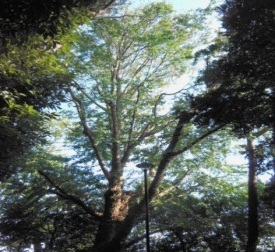
Ikegami area
Honmonji Park (Park category–Japanese zelkova tree)
Address
1 Chome-11-1, Ikegami
Access
An 8-minute walk from the Zeimusho-mae bus stop of Tokyu Bus for Oimachi Station, Shinagawa Station, or Ikegami Eigyosho, from Kamata Station of JR Keihin-Tohoku Line, or a 10-minute walk from Nishi-magome Station of Toei Asakusa Line, or a 15-minute walk from Ikegami Station of Tokyu Ikegami Line
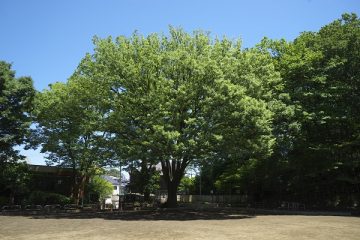
In the precincts of Ikegami Honmonji Temple (Overall category–Cherry tree (Sasabe-zakura))
A very rare species of cherry tree, which has been highly admired as silk-like.
Shintaro Sasabe, who devoted himself entirely to cherry trees, tended young buds of a rare cherry tree grown in his garden with loving care. The trees were later named “Sasabe-zakura” as a new species in 1985.
In Kanto area, five trees were presented to the Fukiage Omiya Palace commemorating for the 60th anniversary of the enthronement of Emperor Showa, and additional trees were also donated to Ikegami Honmonji Temple in 1991.
As admired by people saying, “If Somei-yoshino is likened to cotton, Sasabe-zakura is like silk;” it is a very rare and beautiful species of cherry tree.
Address
1 Chome-1, Ikegami
Access
A 5-minute walk from Honmonji-mae bus stop of Tokyu Bus for Oimachi Station, Shinagawa Station, or Ikegami Eigyosho from Kamata Station of JR Keihin-Tohoku Line, or a 12-minute walk from Ikegami Station of Tokyu Ikegami Line
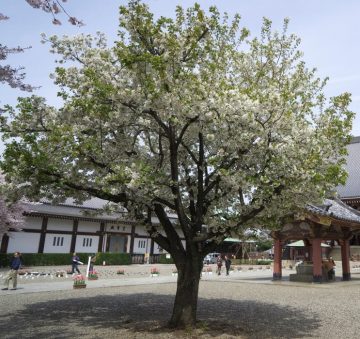
Ikegami Daibo Hongyoji Temple (Overall category–Pine (Japanese black pine))
Address
2 Chome-10-5, Ikegami
Access
A 3-minute walk from Daibo-mae bus stop of Tokyu Bus for Kami-Ikegami Line (outer lane) from Ikegami Station of Tokyu Ikegami Line, an 11- minute walk from Nishi-magome Station of Toei Asakura Line, or a 12-minute walk from Ikegami Station of Tokyu Ikegami Line
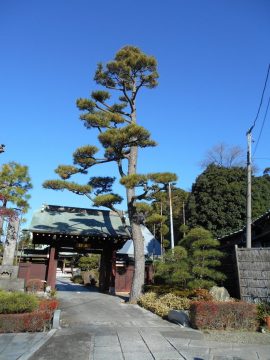
Kugahara Hikari Children’s Park (Park category–Chinese hackberry)
Address
5 Chome-4-10, Kugahara
Access
A 3-minute walk from the Kugahara Tokubetsu Shucchojo-mae bus stop of Tokyu Bus for Den-en-chofu Station from Kamata Station of JR Keihin-Tohoku Line, a 13-minute walk from Chidoricho Station of Tokyu Ikegami Line, or a 13-minute walk from Ikegami Station of the Tokyu Ikegami Line
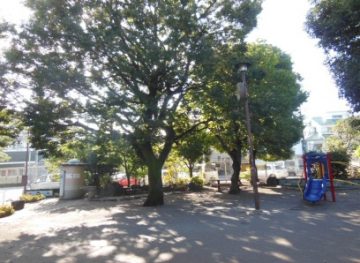
Waterfront area
Kyu-Nomigawa Green Space (Park category–Camphor tree)
Address
Around 5 Chome-36, Omori-Higashi
Access
A 3-minute walk from the Omori-Higashi-Yonchome bus stop of Keikyu Bus for Omori-Higashi-Gochome from Kamata Station of JR Keihin-Tohoku Line
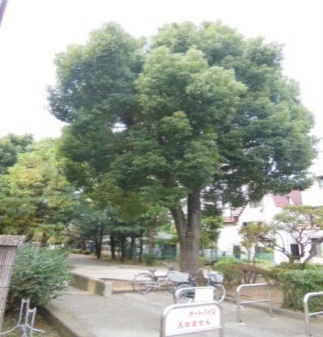
Omori Nursing Home for Seniors (Public facility category–Camphor tree)
Address
1 Chome-16-18, Omori-Nishi
Access
A 12-minute walk from Ōmorimachi Station of Keikyu Main Line
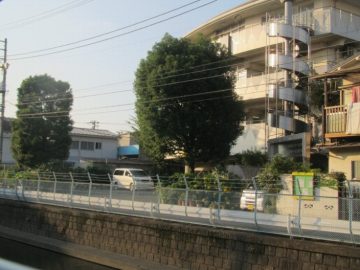
Haneda area
Haginaka Park (Park category–Camphor tree)
Camphor tree is the city tree of Ota City.
Evergreen camphor trees glowing beautifully in the sunshine grow fast and are even pollution-tolerant. With its elegant and strong shape, camphor was designated as a city tree in 1976.
As the tree admired by locals, seven camphor trees, including one in this park, are selected as the Famous Trees in Ota City.
Address
3 Chome-26-46, Haginaka
Access
A 3-minute walk from Haginaka-Koen-Mae bus stop of Keikyu Bus for Haneda-Airport-International-Terminal via Haginaka or for Haneda-Airport-Terminal 1 via Haginaka from Kamata Station of JR Keihin-Tohoku Line, or a 7-minute walk from Ōtorii Station of the Keikyu Airport Line
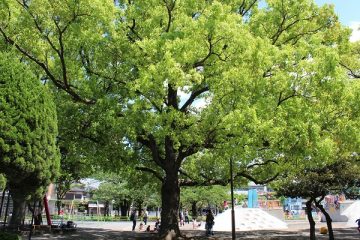
Haginaka Park (Park category–Himalayan cedar)
Address
3 Chome-26-46, Haginaka
Access
A 3-minute walk from Haginaka-Koen-Mae bus stop of Keikyu Bus for Haneda-Airport-International-Terminal via Haginaka or for Haneda-Airport-Terminal 1 via Haginaka from Kamata Station of JR Keihin-Tohoku Line, or a 7-minute walk from Ōtorii Station of the Keikyu Airport Line
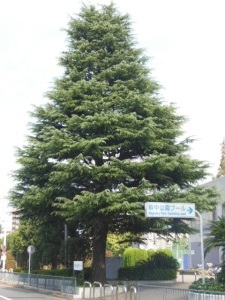
Hon-Haneda Park (Park category–Cherry tree)
Address
3 Chome-23-10, Hon-Haneda
Access
A 2-minute walk from Tonan-Shogakko bus stop of Keikyu Bus for Haneda-Shako via Nakarokugo or for Daishihashi-shita from Kamata Station of JR Keihin-Tohoku Line, or a 17-minute walk from Ōtorii Station of Keikyu Airport Line
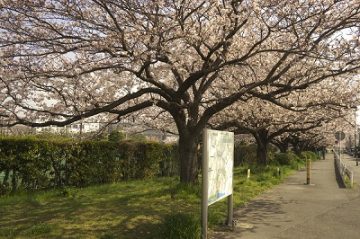
Anamori Inari Shrine (Overall category–Camphor tree)
Address
5 Chome-2-7, Haneda
Access
A 1-minute walk from Anamoribashi bus stop of Keikyu Bus for Haneda-Shako via Nakarokugo from Kamata Station of JR Keihin-Tohoku Line, or a 6-minute walk from Anamori-inari Station of Keikyu Airport Line
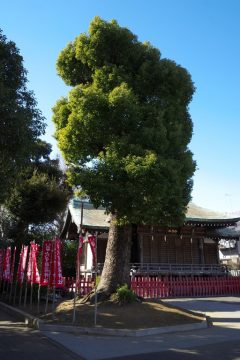
Anamori Inari Shrine (Overall category–Pine (Japanese black pine))
Address
5 Chome-2-7, Haneda
Access
A 1-minute walk from Anamoribashi bus stop of Keikyu Bus for Haneda-Shako via Nakarokugo from Kamata Station of JR Keihin-Tohoku Line, or a 6-minute walk from Anamori-inari Station of Keikyu Airport Line
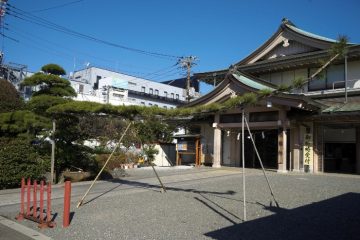
Haneda Chronogate (Overall category–Camphor tree)
Address
11-1, Haneda-Asahicho
Access
A 2-minute walk from Anamoribashi bus stop of Keikyu Bus for Haneda-Shako via Nakarokugo from Kamata Station of JR Keihin-Tohoku Line, or a 5-minute walk from Anamori-inari Station of Keikyu Airport Line
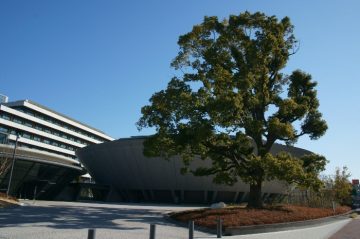
Rokugo area
Naka-Rokugo 3 Chome Park (Park category–Trident maple)
Address
3 Chome-7-2, Naka-Rokugo
Access
A 2-minute walk from Nakarokugo-Sanchome bus stop of Keikyu Bus for Haneda-Shako via Nakarokugo from Kamata Station of JR Keihin-Tohoku Line, or a 6-minute walk from Zōshiki Station of Keikyu Main Line
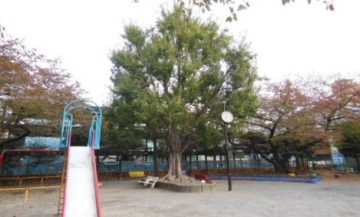
Den-enchofu area
Chofu Waste Collection Office (Public facility category–Chinese hackberry)
Address
32-12, Den-enchofu-Honcho
Access
A 4-minute walk from Numabe Station of Tokyu Tamagawa Line
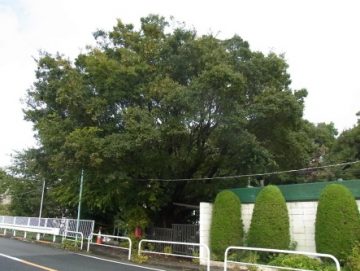
Sakurazaka (cherry tree-lined street) (Roadside tree category–Cherry tree)
A model for “Sakurazaka,” a popular song by Masaharu Fukuyama that people love to hum.
This hill road is a cut along the former Nakahara Kaido highway and used to be a steep slope, so much that it was called “Ozaka (steep slope) in Numabe.”
Since there was a lot of traffic, including carts and peddlers on this slope, tea stalls stood in a row on both sides of the street.
Cherry trees were planted in Taisho period, when the slope was named Sakurazaka. It remains a popular spot attracting many people in the cherry blossom season.
Address
Around 43, Den-enchofu
Access
A 5-minute walk from Numabe Station of Tokyu Tamagawa Line
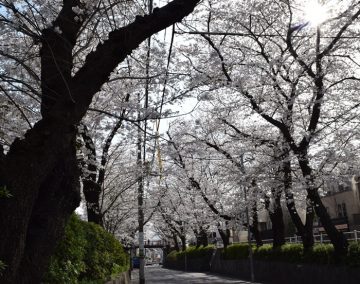
Ota Library (Public facility category–Pine (Japanese red pine))
Address
25-1, Den-enchofu-Minami
Access
A 6-minute walk from Numabe Station of Tokyu Tamagawa Line
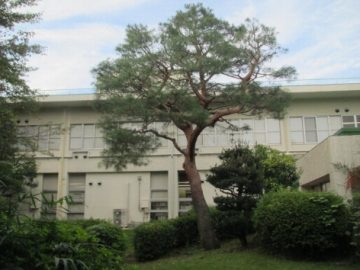
Den-enchofu Seseragi Park (Park category–Bamboo-leaf oak)
Address
1 Chome-53-10, Den-enchofu
Access
A 1-minute walk from Tamagawa Station of Tokyu Tamagawa Line
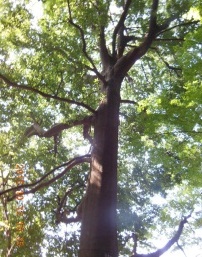
Den-enchofu Seseragi Park (Park category–Ginkgo)
Address
1 Chome-53-10, Den-enchofu
Access
A 1-minute walk from Tamagawa Station of Tokyu Tamagawa Line
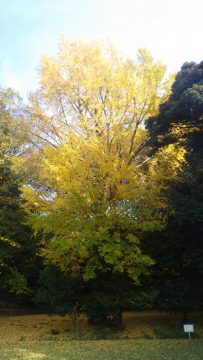
Tree-lined streets in Den-enchofu (Roadside tree category–Ginkgo)
Colored ginkgo trees along the streets radiating in all directions making golden tunnels.
Den-enchofu is a residential area developed under the plan by Eiichi Shibusawa since 1918. One hundred fifty-nine ginkgo trees are planted on both sides of the three tree-lined streets of 200 m length stretching radially from the station west exit.
These are very popular ginkgo tree roads where people can enjoy walking through golden tunnels in autumn.
Address
3 Chome, Den-enchofu
Access
A 1-minute walk from Den-en-chofu Station of Tokyu Toyoko Line or Meguro Line
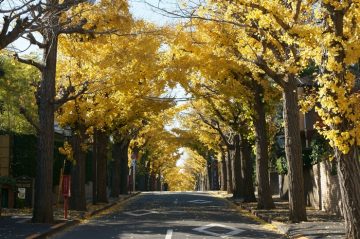
Senzokuike area
Hakusan Shrine (Overall category–Machilus thunbergii)
The tree is 600 years old! A sacred tree in the power spot for matchmaking.
This is an evergreen broad-leaved tree perfect in the grove of the village shrine. In spite of lightning and fire in the past, the tree still shows its divine presence bushy with lush leaves in the fresh green season every year, making many visitors put their hands in prayer.
Shirayama-Hime no Okami (Kukuri-Hime no Kami), one of the enshrined deities of the shrine, is respected as a god for household safety, harmonious marriage, matchmaking, realization of one’s dearest wish, etc.
Address
31-2, Higashi-Minemachi
Access
A 3-minute walk from Kugahara Station of Tokyu Ikegami Line
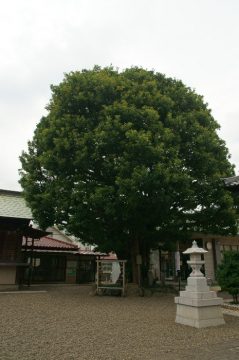
Dodobashi Hachiman Shrine (Overall category–Muku tree)
Address
1 Chome-7-9, Kugahara
Access
A 1-minute walk from the Dodobashi Hachiman-mae bus stop of Tokyu Bus for Den-en-chofu Station from Kamata Station of JR Keihin-Tohoku Line, or a 14-minute walk from Ontakesan Station of Tokyu Ikegami Line
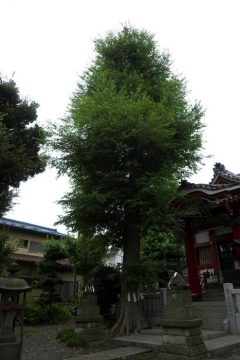
Tonaka Park (Park category- Pine (Japanese red pine))
Address
4 Chome-3-23, Higashi-Yukigaya
Access
A 2-minute walk from the Ebara Hospital-mae bus stop of Tokyu Bus for Omori Station from Senzoku-ike Station of Tokyu Ikegami Line, a 10-minute walk from Senzoku-ike Station of Tokyu Ikegami Line, or a 10-minute walk from Ishikawa-dai Station of Tokyu Ikegami Line
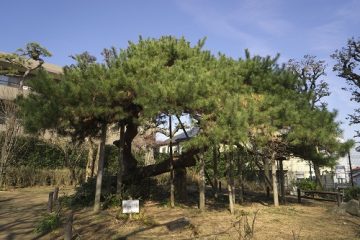
Senzokuike Park (Park category–Muku tree)
Address
2 Chome-14-5, Minami-Senzoku
Access
A 5-minute walk from Senzoku-ike Station of Tokyu Ikegami Line
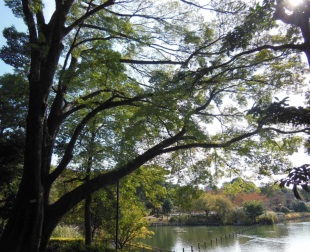
Chidoricho/Yaguchi area
Unoki Hachiman Shrine (Overall category–Muku tree)
Address
2 Chome-24-1, Minami-Kugahara
Access
A 6-minute walk from Kugahara Station of Tokyu Ikegami Line, or a 7-minute walk from Unoki Station of Tokyu Tamagawa Line
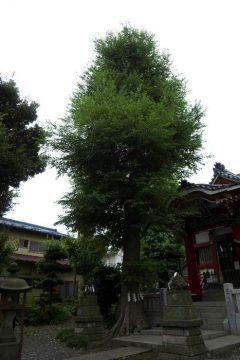
Chidori Ikoi Park (Park category- Cherry tree)
Address
6 Chome-26-5, Kugahara
Access
A 5-minute walk from Chidoricho Station of Tokyu Ikegami Line
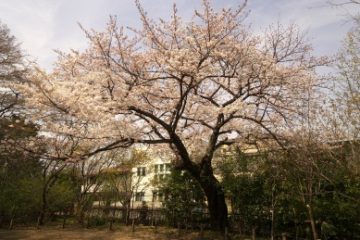
Chidori Ikoi Park (Park category–Camphor tree)
Address
6 Chome-26-5, Kugahara
Access
A 5-minute walk from Chidoricho Station of Tokyu Ikegami Line
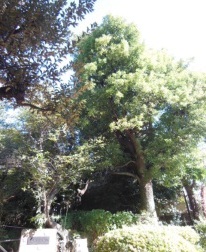
Gas Bashi (Bridge) tree-lined streets (Roadside tree category–Japanese zelkova tree)
Address
3 Chome, Shimo-Maruko
Access
An 8-minute walk from Shimomaruko Station of Tokyu Tamagawa Line
